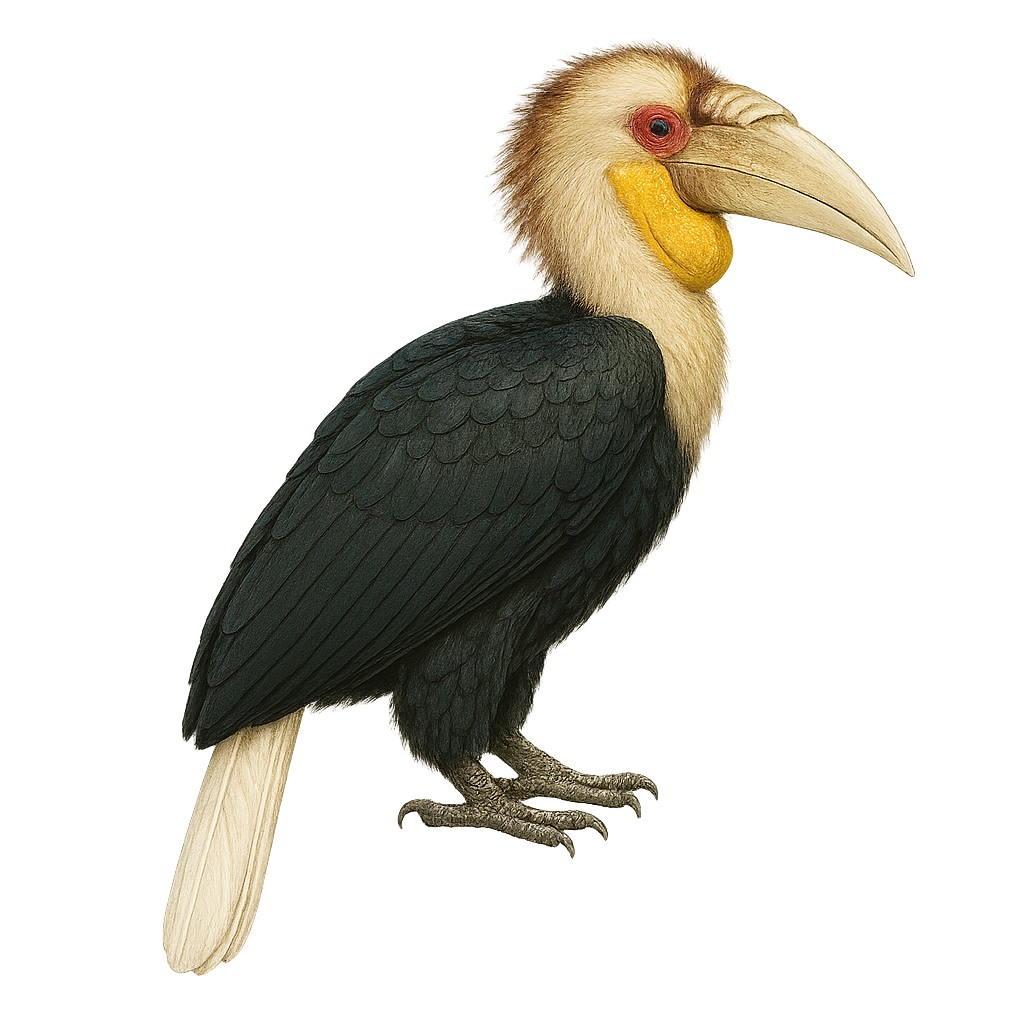Your wildlife photography guide.
Explore the wreathed hornbill in detail, study its behavior, prepare your shots.
Where to observe and photograph the wreathed hornbill in the wild
Learn where and when to spot the wreathed hornbill in the wild, how to identify the species based on distinctive features, and what natural environments it inhabits. The WildlifePhotographer app offers tailored photography tips that reflect the wreathed hornbill’s behavior, helping you capture better wildlife images. Explore the full species profile for key information including description, habitat, active periods, and approach techniques.
Wreathed Hornbill
Scientific name: Rhyticeros undulatus

IUCN Status: Vulnerable
Family: BUCEROTIDAE
Group: Birds
Sensitivity to human approach: Suspicious
Minimum approach distance: 10 m
Courtship display: February to April
Incubation: 38-40 jours
Hatchings: March to May
Habitat:
Tropical forests, subtropical forests, mangroves
Activity period :
Primarily active during the day, with peak activity in the morning and late afternoon.
Identification and description:
The Wreathed Hornbill, Rhyticeros undulatus, is a striking bird known for its large size and distinctive appearance. It features a prominent casque on its large bill, often colorful, which is used to amplify calls. Males and females exhibit marked sexual dimorphism, with males having a bright yellow throat and females a blue one. This bird primarily inhabits the tropical forests of Southeast Asia, playing a crucial role in seed dispersal due to its frugivorous diet. The Wreathed Hornbill is a social bird, often seen in small groups. However, it is threatened by deforestation and hunting, leading to population declines in some areas.
Recommended lens:
400mm – adjust based on distance, desired framing (portrait or habitat), and approach conditions.
Photography tips:
To photograph the Wreathed Hornbill, it is advisable to use a telephoto lens of at least 400mm to capture detailed images from a distance. Look for areas of the forest where these birds gather, often near fruiting trees. Be patient and discreet to avoid scaring them, as they are suspicious. Take advantage of the morning or afternoon light to get shots with beautiful natural lighting.
The WildlifePhotographer App is coming soon!
Be the first to explore the best nature spots, track rutting seasons, log your observations, and observe more wildlife.
Already 1 432 wildlife lovers subscribed worldwide

